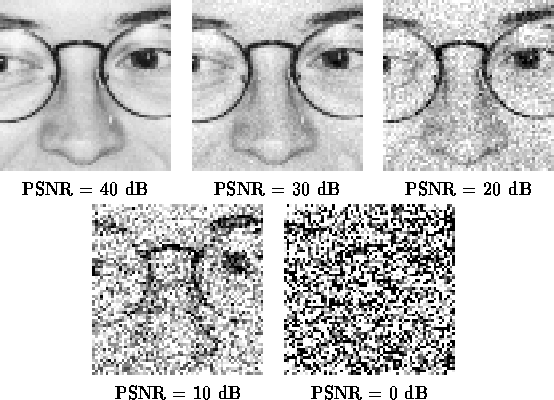Comparing restoration results requires a measure
of image quality. Two commonly used measures are Mean-Squared
Error and Peak Signal-to-Noise Ratio [30].
The mean-squared error (MSE) between two images g(x,y) and ![]() is:
is:
![]()
One problem with mean-squared error is that it depends strongly on the image intensity scaling. A mean-squared error of 100.0 for an 8-bit image (with pixel values in the range 0-255) looks dreadful; but a MSE of 100.0 for a 10-bit image (pixel values in [0,1023]) is barely noticeable.
Peak Signal-to-Noise Ratio (PSNR) avoids this problem by scaling the MSE according to the image range:
![]()
where S is the maximum pixel value. PSNR is measured in decibels (dB).
The PSNR measure is also not ideal, but is in common use.
Its main failing is that the signal strength is estimated as
![]() , rather than the actual signal strength for the image.
PSNR is a good measure for comparing restoration results for the same image,
but between-image comparisons of PSNR are meaningless.
One image with 20 dB PSNR may look much better than another image
with 30 dB PSNR.
, rather than the actual signal strength for the image.
PSNR is a good measure for comparing restoration results for the same image,
but between-image comparisons of PSNR are meaningless.
One image with 20 dB PSNR may look much better than another image
with 30 dB PSNR.
MSE and PSNR figures provided in this thesis were calculated after quantization (i.e. after converting floating-point pixel values to integer), but before clipping of the intensity range.

Figure 1.7: Illustration of the PSNR measure